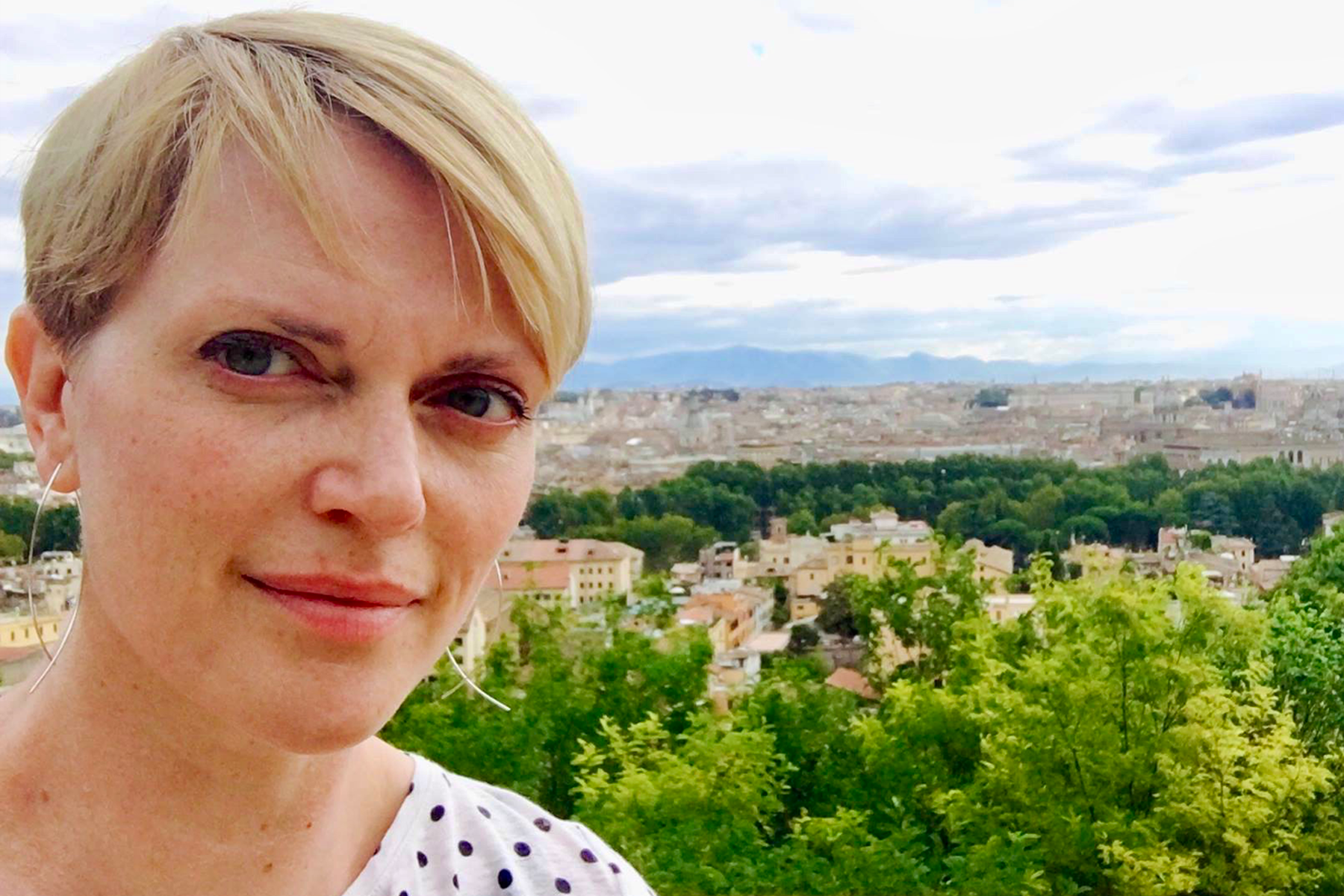
Faculty Friday: Mira Green
 “The dead do tell tales at Vesuvius.” So read the cover text of the May 1984 edition of National Geographic that captured Mira Green’s imagination and set the trajectory for her own life’s story.
“The dead do tell tales at Vesuvius.” So read the cover text of the May 1984 edition of National Geographic that captured Mira Green’s imagination and set the trajectory for her own life’s story.
Green, who is a full time lecturer at the University of Washington, recalls thumbing through the issue and its depictions of newly discovered Roman skeletons as an 11-year-old and thinking, “I need to know more about this.”
One image stuck with Green in particular—that of a skeleton of a woman holding a baby: “The baby has a gold bracelet on and the woman doesn’t, so it was assumed maybe this person was a [lower status] caregiver or a slave,” Green says.
The tactile immediacy evoked by the photograph remains an important influence in Green’s research today, which explores how the material world creates visual and physical experiences that communicate class and gender in the ancient world.
What does the heft of a certain cooking vessel tell us about the people—likely slaves—working in the kitchen? Or how do the dimensions of a kitchen bench versus a reclined dining surface convey a sense of how those with power interacted with those who didn’t. These are some of the questions Green asks.
Her answers are often informed by physically handling ancient objects or navigating her 5’5” frame (conveniently the same height as the average ancient Roman man) around living spaces as ancient people would have done.
So when in 2016 Green set out to develop a history course on Ancient Rome specifically for remote learners as part of the UW Teaching and Technology Fellowship, she wasn’t exactly within the comfort zone of having history close at hand.
“I thought it would be lecturing to a blank screen for 45-minutes,” Green says, adding she quickly realized “that’s not going to work for anybody.”
Working first with the Center for Teaching and Learning and later with UW’s Continuum College, Green learned more about ways Canvas, the official learning management system at the UW, can be optimized through technology to enhance remote learning and lecturing.

Green credits her collaboration with instructional designer Christine Treece and video producer Ryan Adams for helping her adapt scripted lectures into a digital, multimedia format.
“That experience taught me the importance of short lectures where, as the professor, you can use your expertise to highlight or help students understand what they just read,” she says. Now, with all classes and instruction happening remotely this spring due to COVID-19, Green will have the chance to roll out the course after several years of development.
“I’m excited to see how students respond to it and the possibility of reaching students who normally couldn’t come to my classes,” Green says, citing how her one previous experience with remote teaching—during UW’s snow days in 2019—gave her a preview of how “asynchronous” learning can give voice to students who might not have spoken up in a lecture setting.
“Students might interact more with the material than if they were sitting in a lecture. [In 2019] I was surprised at all the important and smart things they were saying that they never raised in class.”
Deepening conversations about classical antiquity
The experience of developing a history course specifically for remote learning led Green to two important conclusions: don’t lecture for more than 15 minutes at a time and always give clear instructions for written responses.
Breaking up a lecture into shorter segments interspersed with reading or visual interpretation exercises allows students to proceed at their own pace while remaining engaged with frequent activities.

Dr. Mira Green teaches an online course on Ancient Roman History (HSTAM302) developed specifically for remote learning.
”If you’re going to be assigning discussions online, make clear the expectations for students to respond,” Green advises. “When you make some sort of qualifications on discussions, the conversation actually happens and students will sometimes go beyond what’s required.”
Green calls both strategies “simple switches” that also translate well into teaching normally, encapsulating her advice into a single mantra: “keep it simple for yourselves, but also keep breaking it up for students.”
Green encourages fellow instructors to use remote teaching as an opportunity to more fully embrace multimedia digital learning resources such as podcasts. She’ll frequently give podcast listening assignments where students are required to write a “peer review.”

Two podcast series Green frequently assigns are BBC Radio 4’s In Our Time and Ancient Greece Declassified, which both feature hosts who interview panels of some of the best-known scholars in the field.
“My goal through all of that is to get students to realize there are huge historiographical debates that have been happening for centuries and are happening right now and everything they’re learning about can plug them into these broader conversations and interests.”
Green says such exercises teach students to think critically about what people are saying based on their interpretations of material they’ve also read and help establish a filter for what excellent online learning content looks and sounds like amid less compelling or accurate offerings.
The ability to draw distinctions between history and history-as-entertainment is increasingly important, Green says, especially as academics continue to think broadly about entry points to ancient studies and how to open the field to more disciplines, perspectives, and voices.
“In some respects Roman history becomes entertainment rather than thinking about how it might have implications for the moment we’re living in,” Green says. “I hope to convince [students] that the study of Rome is a really engaging, dynamic, and useful thing to study—not simply because it’s fun.”
As the next generation of historians begins discovering the ancient world from a digital distance, Green will be working to ensure that that learning experience is as engaging and immediate as if sprung from the pages of a magazine.